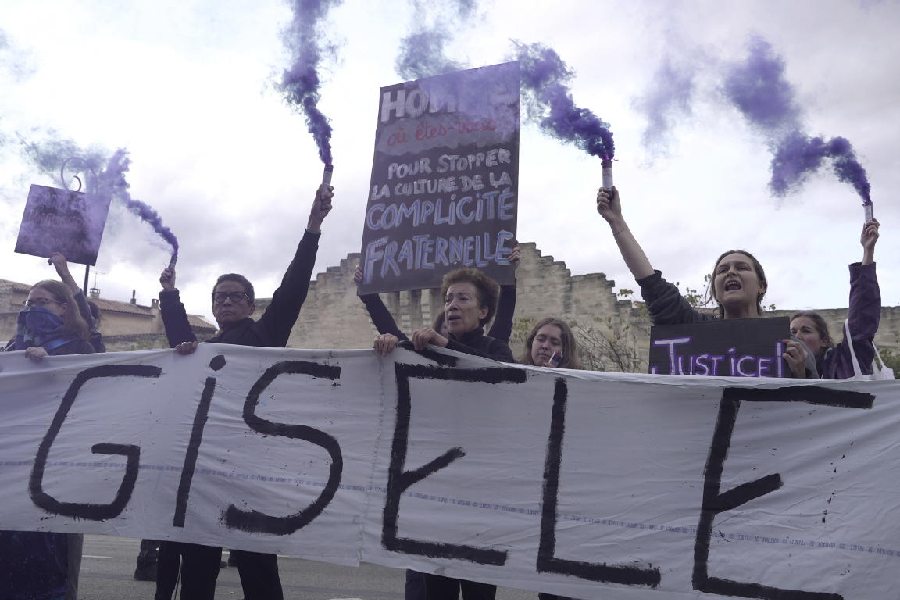For those philosophically pondering the possibility of a virus having emerged to “fix” the world, here is more food for thought: the novel coronavirus or Sars-Cov2 is killing far more men than women. While it is still too early to definitively explain such gender-based vulnerability, data from affected countries clearly show this trend. Globally, for every 100 Covid-19 casualties, 66 are males. In countries such as Italy, Switzerland, Ireland, Denmark and Greece, the male death-rate is more than double the female death rate. Even in Bengal this figure stands at around 64 per cent.
While there was an attempt to attribute this to the relatively unhealthy lifestyle of males — lack of hygiene, obesity and smoking — emerging epidemiological data has debunked this perception. Globally, the sex ratio of people infected by the virus appears evenly balanced. However, when it comes to death, females seem to be luckier. What could the reason be for this gender bias?
Every virus requires a “cellular gate” to enter our cells. For Sars-Cov2, the gate of choice is a lung-specific enzyme called the Angiotensin Converting Enzyme-2, or ACE-2, found on the surface of lung cells. Males have far more ACE-2 receptors, particularly on pulmonary alveolar Type II cells that control breathing. This may make the male lung more prone to damage that directly affects breathing functions. Emerging studies also claim that the spike protein of the virus that connects with the ACE-2 receptor has to be processed by a protease called TMPRSS2 in our body to allow the virus to enter our lungs. The TMPRSS2 protein has also been found to be significantly higher in males. Together, it may explain why the male lung acquires comparatively high viral loads within a short time, which makes it more prone to damage.
As soon as Sars-Cov2 enters the lung cells, it is confronted by our dendritic cells that try to virtually “eat up” the virus. Females not only deploy more dendritic cells but also have more plasma cells, which produce the second line of our immunological defence, antibodies, that are more effective in neutralising the virus. They also have far higher levels of the Baff protein that helps activate such plasma cells to register immunological memory against the virus and produce increased levels of antibodies. Thus, compared to males, females can more effectively nip such viral infections in the bud.
Strictly speaking, it is not the virus that kills us. It is against the interest of a virus to kill its host as it fundamentally invades our body to grow and evolve. However, when they do, we start firing immunological cannonballs called cytokines at them. These cytokines end up destroying our lung cells in their bid to kill the virus. This may cause fatal fluid accumulation in the lungs, leading to pneumonia and death. However, not all deaths in Covid-19 patients are from pneumonia; factors such as endothelial vascular thrombosis, primarily in the heart, are also responsible. The root cause of this is again the cytokine storm in the lung. This is not surprising given that the lungs and heart are intimately connected and malfunction in one usually affects the other.
All said, death essentially comes as collateral damage in our body’s attempt to neutralise Sars-Cov2. The factor that plays a dominating role in eliciting a suicidal cytokine storm is perhaps IL-6, a cytokine that is highly overexpressed along with other pro-inflammatory cytokines in the male lung during such viral infections. This may explain why fatal lung damage and death from Covid-19 is seen more frequently in males.
Also, most immune-related genes reside on the X chromosome. While females have two X chromosomes (XX), males have only one (XY). It was long believed that the second X chromosome in females was silent but now we know that more than 200 genes on the second X chromosome are functional, of which a large number help impart immunity against pathogens such as Sars-Cov2.
Hormones too probably play a role in the gender-discriminatory severity of Covid-19. The female hormone, estrogen, reduces the expression of ACE-2 in the lung as well as suppresses the suicidal cytokine storm. Progesterone, another female hormone, can also suppress such cytokine outbursts. As estrogen levels typically drop in females following
menopause, it is progesterone which gives post-menopausal women sustained protection from such life-threatening cytokine storms against viral infections. In fact, two independent trials in the US are currently trying to exploit such “immuno-suppressive” properties of estrogen and progesterone to treat male patients acutely infected by Sars-Cov2.
Studies have revealed that the receptor of the male hormone, androgen, can bind to a region of the ACE-2 gene called “enhancer region” to trigger over-expression of ACE-2 in the lung of male mice. The same androgen receptors have also been seen to increase the expression of the infection-promoting TMPRSS2. This is supported by the fact that the castration of male mice leads to a phenomenal decrease in both ACE-2 and TMPRS22 levels, which can be reversed by supplementation of androgen. Another male hormone, testosterone, has been seen to suppress early immune responses that neutralise the virus in males.
Gender-based differences in both morbidity and mortality that favour women is not new but is relevant for most infectious diseases that require a robust immunological response in the early stages of infection. In fact, a similar gender bias was also observed during the outbreak of Sars from which Sars-Cov2 is largely believed to have evolved.
The Sars-Cov2 is an entirely new virus and, therefore, we are still learning about its pathogenic behaviour. Thus many perceptions about it — including the possible etiological basis of differential gender susceptibility and the pathophysiological factors contributing to larger death among males compared to females described here — would require more detailed investigations. It also needs to be noted that age may play a decisive role in the assessment of such relative risks based on gender. This is because prospects of both infection and death from Covid-19 are being observed to increase with age for both males and females. Hopefully, we will have a more precise understanding and explanation for this in the coming days.
The writer is head of the department of biotechnology at the University of Calcutta











